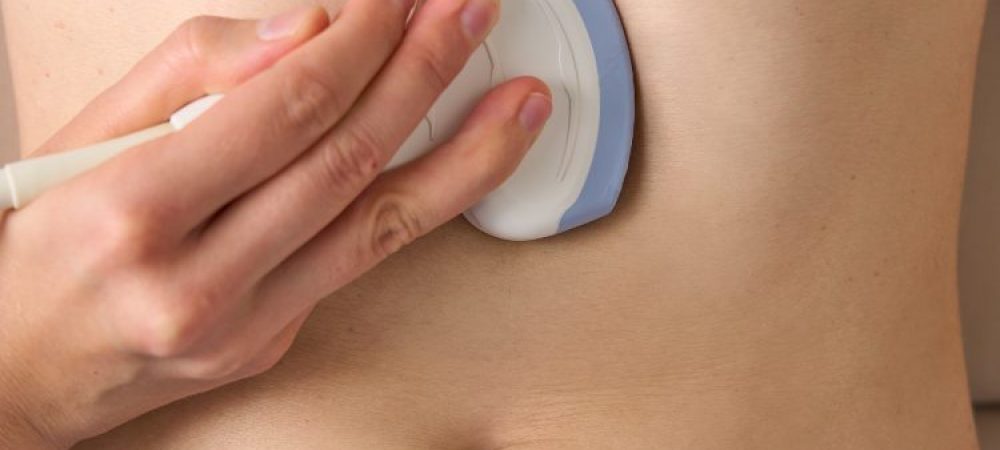Alcoholism & Pancreatic Cancer
Pancreatic cancer is a type of cancer that develops when there is uncontrolled cell growth within the pancreas. (1) There are many risk factors for pancreatic cancer, including age, gender, race/ethnicity, smoking, obesity and diet, diabetes, family history, rare inherited conditions, chronic pancreatitis, chemicals, bacteria, hepatitis B infection, cirrhosis, and excessive alcohol use. (2)
The excessive drinking that often accompanies alcoholism is a severe risk factor associated with pancreatic cancer and can lead to other risk factors, such as chronic pancreatitis and cirrhosis. (2, 3) While some individuals who experience additional risk factors for pancreatic cancer may be able to define safe drinking limits, it may be difficult for those with alcoholism to do so.
If you or someone you love experiences risk factors for pancreatic cancer and is also experiencing difficulty limiting their drink, alcoholism treatment may be necessary. If you believe you or a loved one is struggling with alcoholism, you can look out for several signs and symptoms associated with alcoholism. (4)

Where is the Pancreas Located?
The entire pancreas is located in the body’s abdomen, behind the stomach, and near the gallbladder. (1) Part of it is located between the stomach and the spine. The rest sits in the curve of the first part of the small intestine, called the duodenum. (5) The pancreas contains glands that create hormones such as insulin and enzymes. (1)
It is located so deep in the abdomen that pressing on the abdomen will not always help identify a pancreatic tumor. This inability to quickly detect a potential tumor can lead to late detection. Symptoms of pancreatic cancer do not occur until the tumor begins to affect the functioning of the pancreas or other nearby organs, including the stomach, duodenum, liver, and gallbladder. (5)
What is Pancreatic Cancer?
Pancreatic cancer develops when part of the pancreas experiences uncontrolled cell growth within it. (1) Most pancreatic cancers are considered exocrine cancers. Pancreatic neuroendocrine tumors, or islet cell tumors, are less common but have better recovery rates. (3) Pancreatic cancers account for about 3% of all cancer in the United States. It is expected that the year 2021 will result in a total of 60,430 pancreatic cancer diagnoses. (1)
Signs & Symptoms of Pancreatic Cancer
Symptoms of pancreatic cancer usually do not appear until the later stages of cancer. They can also look like symptoms of other cancers which can make it challenging to diagnose. (1)
Some common symptoms of pancreatic cancer include:
- Abdominal pain
- Back pain
- Jaundice (occurs in 70% of those with a diagnosis)
- Lack of appetite
- Weight loss
- Swelling of the gallbladder
- Swelling of the liver
- Blood clots
- Deep vein thrombosis
- Pulmonary embolism
- Diabetes
- Pale gray or fatty stool
- Nausea and vomiting
- Fever and chills
- Fatigue
- Diarrhea or constipation
- Indigestion
- Rashes due to jaundice
If pancreatic cancer spreads throughout the body, new symptoms may appear in the areas it spreads to. (1)
Risk Factors for Pancreatic Cancer
Common risk factors for pancreatic cancer include age, gender, race/ethnicity, smoking, obesity and diet, diabetes, family history, rare inherited conditions, chronic pancreatitis, chemicals, bacteria, hepatitis B infection, cirrhosis, and excessive alcohol use. (2)
Individuals of the Ashkenazi Jewish heritage and black people are more likely to develop pancreatic cancer than Asian, Hispanic, or white people. (2)
Individuals who regularly eat high-fat foods have an increased risk of developing pancreatic cancer. Obese and overweight people have an even higher risk of being diagnosed with and dying from pancreatic cancer. (2) Obese individuals are 20% more likely to develop pancreatic cancer than individuals who are not obese. (3)
Someone with diabetes may have an increased risk of developing pancreatic cancer, especially when they have had it for many years. Additionally, sudden development of diabetes as an older adult can be an early symptom of pancreatic cancer. However, a diabetes diagnosis does not ensure the development of pancreatic cancer. (2)
A family history of pancreatic cancer places an individual at higher risk of developing this cancer. Having two or more first-degree relatives or three or more family members in general with a pancreatic cancer diagnosis can place an individual at risk. (2)
Certain uncommon inherited conditions within family members can also increase someone’s risk of developing pancreatic cancer. These conditions include: (2)
- Hereditary pancreatitis (HP)
- Peutz-Jeghers syndrome (PJS)
- Familial malignant melanoma and pancreatic cancer (FAMM-PC)
- Hereditary breast and ovarian cancer (HBOC) syndrome
- Lynch syndrome
Additional inherited conditions that may increase the risk of pancreatic cancer include: (2)
- Li-Fraumeni syndrome (LFS)
- Familial adenomatous polyposis
Pancreatitis is a painful pancreatic disease characterized by inflammation of the pancreas. Chronic pancreatitis can increase someone’s risk of developing pancreatic cancer. (2)
Exposure to chemicals like pesticides, benzene, certain dyes, and petrochemicals can increase the risk of pancreatic cancer. (2)
A common bacteria, Helicobacter pylori (H. pylori), can cause inflammation and ulcers in the stomach. An infection with this kind of bacteria can increase the risk of both stomach cancer and pancreatic cancer. (2)
Hepatitis viruses cause harm to an infected individual’s liver. A previous hepatitis B infection is twice as common in those with pancreatic cancer than those without it. (2)
Cirrhosis develops when liver cells become damaged and are then replaced by scar tissue. Cirrhosis is often caused by regular and excessive alcohol use. It is also caused by viral hepatitis, an excess of iron in the liver caused by hemochromatosis, and other rare types of chronic liver disease. (2)
Chronic, heavy alcohol use can cause recurrent pancreatitis, repeated inflammation of the pancreas, and cirrhosis, which develops when liver cells are damaged and replaced by scar tissue. Both of these diseases increase an individual’s risk of developing pancreatic cancer. (2)

Alcohol and Pancreatic Cancer
Many individuals who experience alcoholism drink chronically and heavily. This kind of drinking can damage the pancreas and cause chronic pancreatitis and cirrhosis, both of which can create an increased risk of developing pancreatic cancer. (2, 3)
Alcoholism may also more directly create a higher risk for developing pancreatic cancer. Alcohol is partially metabolized in the pancreas, and some of its early metabolics can be toxic to the cells. They can create changes in pathways linked with cancer and inflammation. (6)
A study found that as alcohol consumption increased in individuals, so did their risk of developing pancreatic cancer. A history of binge drinking large quantities of alcohol, over five drinks during a drinking episode, increased someone’s risk of developing pancreatic cancer more than threefold. (7) Another study found that consuming three or more liquor drinks per day increases an individual’s risk of pancreatic cancer mortality. (8)
While high alcohol intake creates an increased risk of pancreatic cancer, low-to-moderate alcohol intake does not. (9)
Safe Drinking Limits
Since low-to-moderate alcohol intake does not lead to an increased risk of pancreatic cancer, it may be helpful to define safe drinking limits for someone who may also experience other risk factors. (6)
Excessive alcohol consumption can lead to various other cancers, including breast, colon, liver, and cancers of the mouth, throat, or larynx, and of course, pancreatic cancer. However, moderate drinking in middle-aged adults is associated with a lower risk of cardiovascular disease. It is essential to understand the right amount of alcohol to consume. (6)
The American Cancer Society recommends that individuals limit their alcohol consumption to no more than one drink per day for women and no more than two drinks per day for men. (6)
The National Institute on Alcohol Abuse and Alcoholism defines one drink as 12 ounces of regular beer (5% alcohol), 8 to 9 ounces of malt liquor (7% alcohol), 5 ounces of unfortified wine (12% alcohol), 1.5 ounces of 80-proof hard liquor (40% alcohol). (4)
Unfortunately, an individual who experiences alcoholism may be unable to follow a safe drinking limit, as alcoholism is often characterized by the inability to moderate or stop drinking, even when there is an honest desire to do so.
Signs and Symptoms of Alcoholism
If you or someone you love experiences risk factors for pancreatic cancer and is experiencing difficulty limiting their drink, alcoholism treatment may be necessary. Some of the signs and symptoms of alcoholism to look out for include: (4)
- Drinking more or longer than initially planned (10)
- An extreme desire for alcohol that blocks out all other thoughts (10)
- An inability to limit the intake of alcohol (4)
- Continuing to drink alcohol after experiencing depression, anxiety, health issues, or memory blackouts due to alcohol intake (10)
- A desire to cut down on alcohol intake or unsuccessful attempts to do so (4)
- Large amounts of time spent drinking, getting alcohol, or recovering from hangovers (4)
- Strong cravings or urges to drink alcohol (4)
- Difficulty fulfilling significant obligations at work, school, or home due to repeated alcohol use or sickness caused by alcohol use (4)
- Continuing to drink alcohol even when it is causing physical, social, or interpersonal problems (4)
- A reduction in activities and hobbies socially and at work (4)
- Using alcohol in situations in which it is unsafe to do so, such as when driving or swimming (4)
- Tolerance to alcohol that requires more and more alcohol intake to feel its effect, or a reduced effect to the same amount of alcohol (4)
- Withdrawal symptoms such as nausea, sweating, and shaking that are experienced when alcohol is not consumed or drinking to avoid these symptoms (4)
It is essential to seek treatment as soon as possible if you believe you or a loved one is struggling with alcoholism.
Sources
- Brazier, Y. (2021, May 13). What to know about pancreatic cancer. Medical News Today. https://www.medicalnewstoday.com/articles/323423
- Pancreatic Cancer – Risk Factors. (2020, July 16). Cancer.Net. https://www.cancer.net/cancer-types/pancreatic-cancer/risk-factors
- Pancreatic Cancer Risk Factors. (2020). The American Cancer Society. https://www.cancer.org/cancer/pancreatic-cancer/causes-risks-prevention/risk-factors.html
- Alcohol use disorder – Symptoms and causes. (2018, July 11). Mayo Clinic. https://www.mayoclinic.org/diseases-conditions/alcohol-use-disorder/symptoms-causes/syc-20369243
- Pancreas Basics – Pancreatic Cancer. (2020). Johns Hopkins Pathology. https://pathology.jhu.edu/pancreas/basics
- Heavy Drinking Linked to Pancreatic Cancer. (2011, March 14). WebMD. https://www.webmd.com/cancer/pancreatic-cancer/news/20110314/heavy-drinking-linked-to-pancreatic-cancer
- Gupta, S. (2010). Risk of pancreatic cancer by alcohol dose, duration, and pattern of consumption, including binge drinking: a population-based study. National Institutes of Health (NIH). https://www.ncbi.nlm.nih.gov/pmc/articles/PMC2883092/
- Gapstur, S. M., PhD. (2011, March 14). Association of Alcohol Intake With Pancreatic Cancer Mortality in Never Smokers. Cancer Screening, Prevention, Control | JAMA Internal Medicine https://jamanetwork.com/journals/jamainternalmedicine/fullarticle/226816
- Wang, Y. (2016, March 12). Association between alcohol intake and the risk of pancreatic cancer: a dose–response meta-analysis of cohort studies. BMC Cancer. https://bmccancer.biomedcentral.com/articles/10.1186/s12885-016-2241-1
- Do I Have an Alcohol Problem? (2002, February 14). WebMD. https://www.webmd.com/mental-health/addiction/understanding-alcohol-abuse-symptoms
